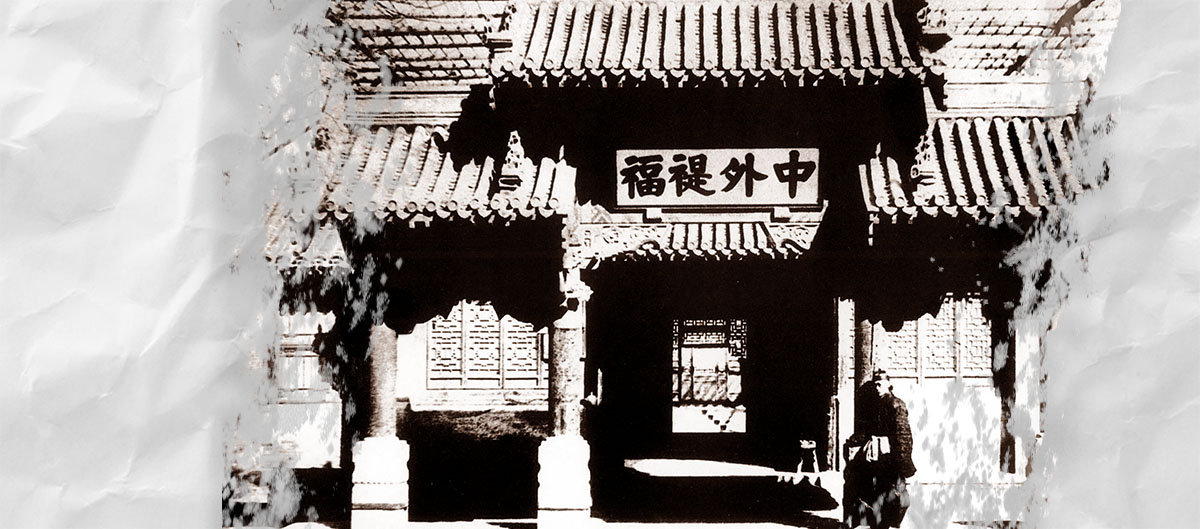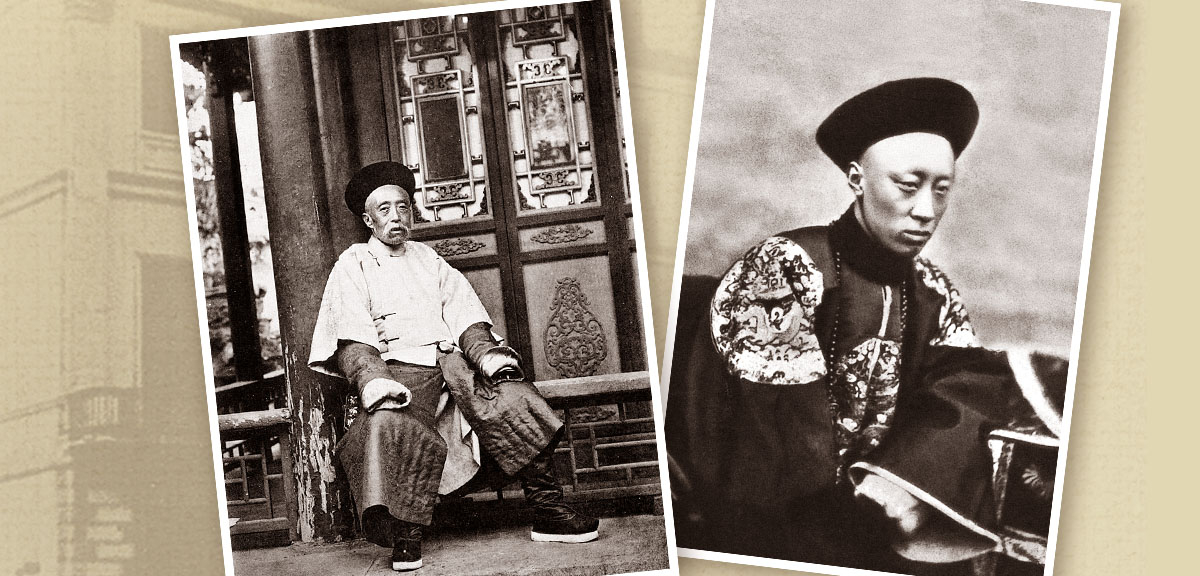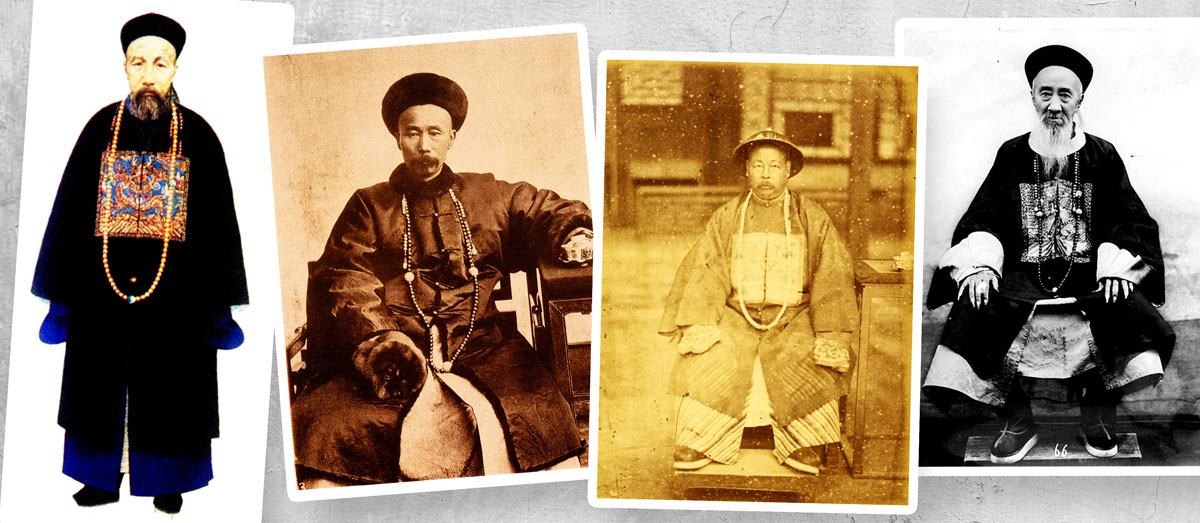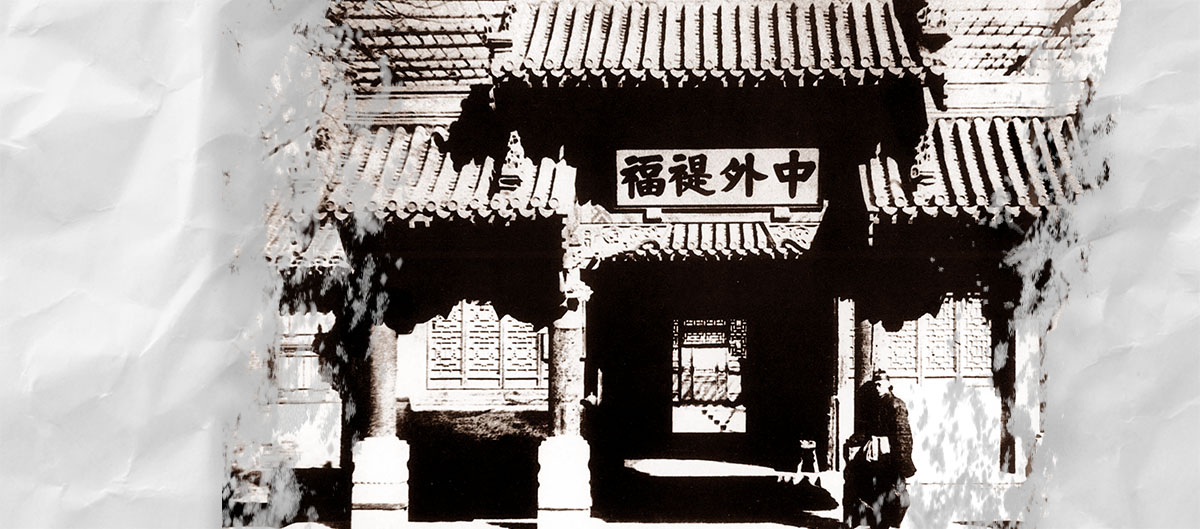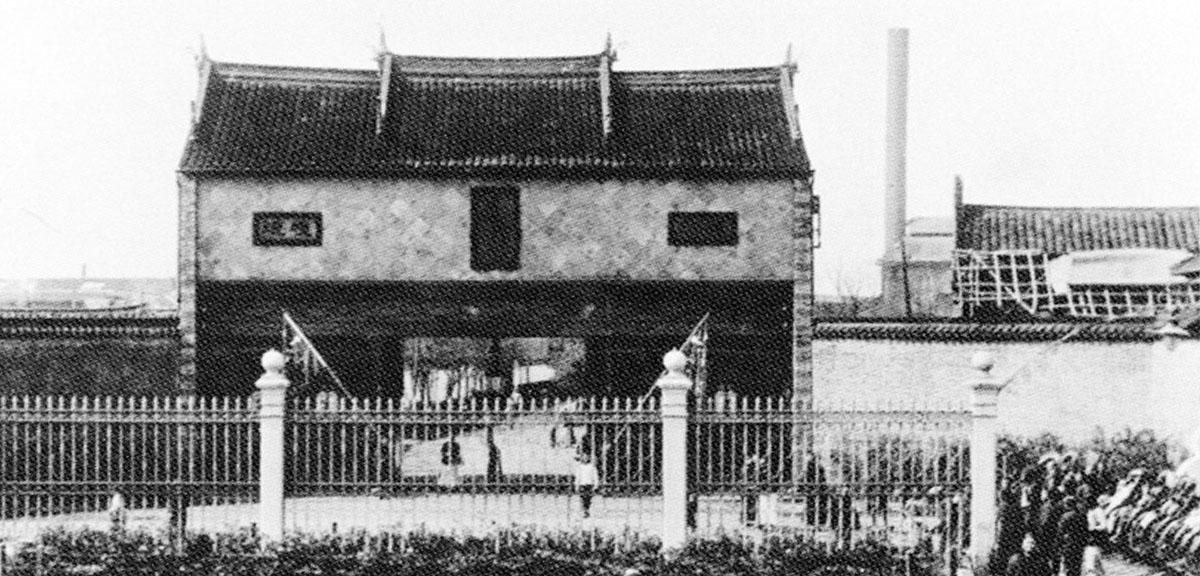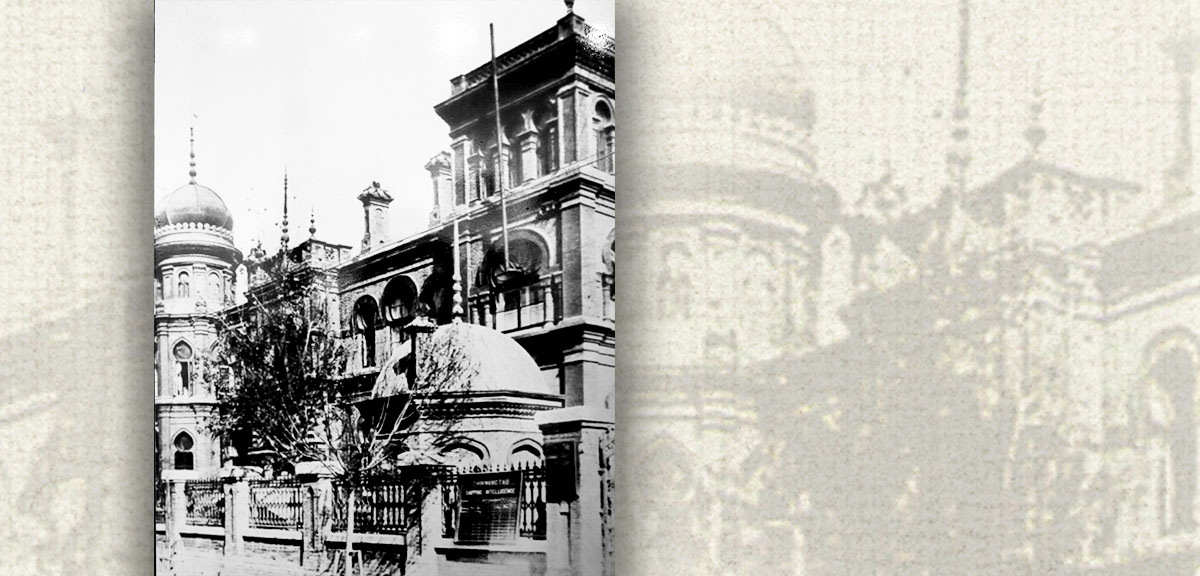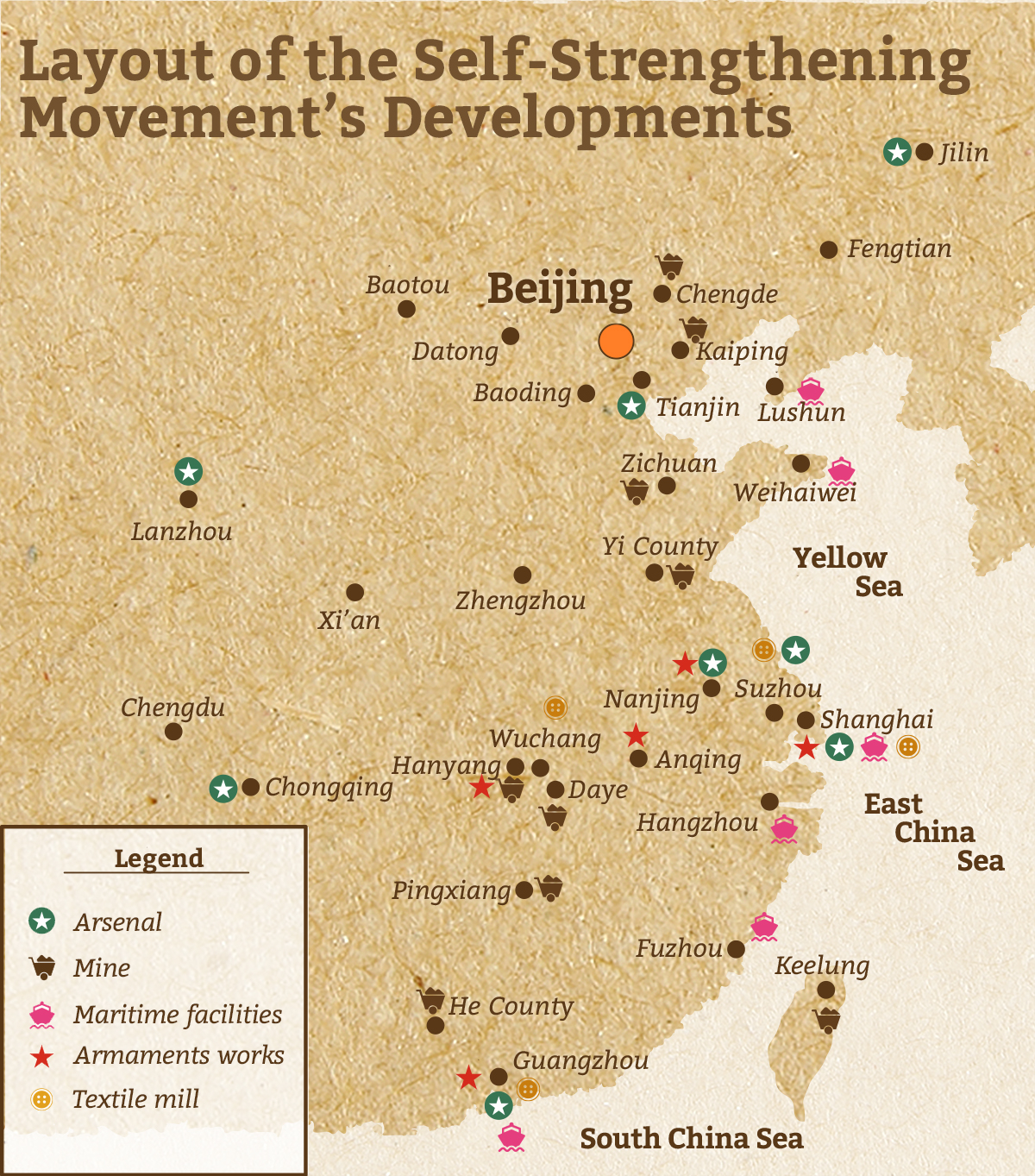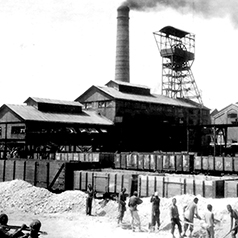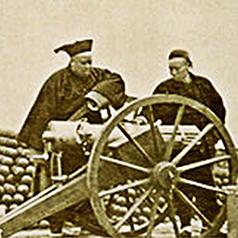The two Opium Wars saw China defeated twice, which set off a shock among the Qing officials. Within the government, it was generally agreed that China failed because it lacked strong ships, effective weaponry, and technologies equal to those of the Westerners. When the Taiping Rebellion (太平天國) was successfully quelled with the combined might of the Xiang Army (湘軍), Huai Army (淮軍), and the Foreign Gun Troop (洋槍隊), the superiority of Western firepower was evident to those prominent statesmen tasked with reviving the Qing regime. The only way to save the failing regime from its internal and external woes, they concluded, was to strengthen the nation through emulating the military and technological aspects of the Western powers.
It was in this context that the Self-strengthening Movement - the first reform aimed at learning from the West - began in 1860. Representative figures of the movement included Yixin (奕訢), also known as Prince Gong (恭親王), Wenxiang (文祥), Zeng Guofan (曾國藩), Li Hongzhang (李鴻章), Zuo Zongtang (左宗棠), and Zhang Zhidong (張之洞). They were referred to as the “Western Affairs Camp (洋務派)”. The movement was guided by the principles “acquire the skills the barbarians excel in to subdue them (師夷長技以制夷)” and “Chinese learning for substance, Western learning for practical application (中學為體,西學為用)”. In January 1861, China set up the Office for the General Management of Affairs Concerning the Various Countries (總理各國事務衙門), which also called the Zongli Yamen (總理衙門). It became the central command body of the Self-strengthening Movement. Spanning more than three decades, the movement adopted “self-strengthening (自強)” as its rallying call in its early days, emphasising the development of military industries and adoption of Western-style military training. Later, the slogan became “wealth building (自富)” as the country focused on development of all kinds of civilian industries.
|
|
The Self-strengthening Movement, China’s first reform in the early modern age, is known as the Yangwu Yundong (Western Affairs Movement) in Chinese. What exactly does it stand for? |
|
|
See answer below. |
Photos of Wenxiang, the Grand Secretary (left), and Prince Gong (right). Both were mainstays of the Self-strengthening Movement.
The leaders of the Western Affairs Camp, pictured from left to right: Zeng Guofan, Li Hongzhang, Zuo Zongtang, and Zhang Zhidong. All were powerful and reputable officials.
The Zongli Yamen was established in 1861 at Prince Gong’s proposal and was headed by him for a long time. Tasked with managing foreign affairs, the office became the iconic institution of the Self-strengthening Movement. Pictured is the main entrance to the Zongli Yamen.
A key task of the Self-strengthening Movement was to explore and adopt a new form of diplomacy. In 1867, the Qing government appointed an American diplomat, Anson Burlingame, as Envoy Extraordinary and Minister Plenipotentiary. From 1868 to 1870, he led a Chinese diplomatic mission to the United States and the principal European nations. Through this experience, the Chinese delegation gained knowledge about diplomacy, which helped improve Chinese-foreign relations. Pictured is a group photo of the delegation, with Burlingame standing in the centre.
In 1877, Qing China established official diplomatic relations with Britain. Pictured is its British embassy, the first overseas diplomatic mission established by China in the modern era.
The Jiangnan Arsenal (江南機器製造總局) located in Shanghai (上海). With “self-strengthening” as its rallying call, the Self-strengthening Movement set great store by the development of military industries and the adoption of Western-style military training. Established in June 1865, the Jiangnan Arsenal was a large-scale, government-run enterprise dedicated to the manufacturing of military equipment.
In 1866, the Fuzhou Arsenal (福州船政局) was established in Mawei (馬尾), Fuzhou. It consisted of a shipyard and an academy for naval administration, and was dedicated to the training of shipbuilding professionals and naval officers. Having suffered defeat in two external wars, China finally recognised the new threat posed by sea-based invasions, and prioritised its naval administration and development.
During the later stage of the Self-strengthening Movement, there was a greater emphasis on industrial development. Pictured is the office building of China Merchants Steam Navigation Company (輪船招商局). Founded in Shanghai in January 1873, the company operated both river and ocean-going vessels as its primary business.
The office building of the Kaiping Coal Mining Bureau (開平礦務局) established in 1878. The mining industry was a key development area for the Self-strengthening Movement.
Layout of the Self-Strengthening Movement’s Developments
|
|
The Self-strengthening Movement, China’s first reform in the early modern age, is known as the Yangwu Yundong (Western Affairs Movement) in Chinese. What exactly does it stand for? |
|
|
The objective of the Self-strengthening Movement was to acquire knowledge about military, technology, and industry from the relatively more advanced Western countries. In ancient China, “hu (胡)” and “fan (番)”, both meaning “foreign” in Chinese, were often added to the names of non-Chinese things as a prefix. Hujiao (pepper) and fanshu (sweet potato) are two examples. Since the late Ming dynasty, the region encompassing Europe and the Americas was commonly called Xiyang (Western Ocean﹝西洋﹞). Thus, objects or practices related to these regions, such as diplomatic missions, shipbuilding, and munitions manufacturing were collectively referred to as yangwu (literally “ocean affairs”, synonymous with “western affairs”). Thus, the reform that sought to introduce these new objects and practices was called the Yangwu Yundong (Western Affairs Movement, with yundong meaning “movement”), and its proponents the Yangwu Pai (Western Affairs Camp). |
Source of most photos used in this feature piece: Visual China Group (pictures 1, 2), Fotoe (pictures 2, 3, 6, 7, 8 and 9), misc. photo sources.




